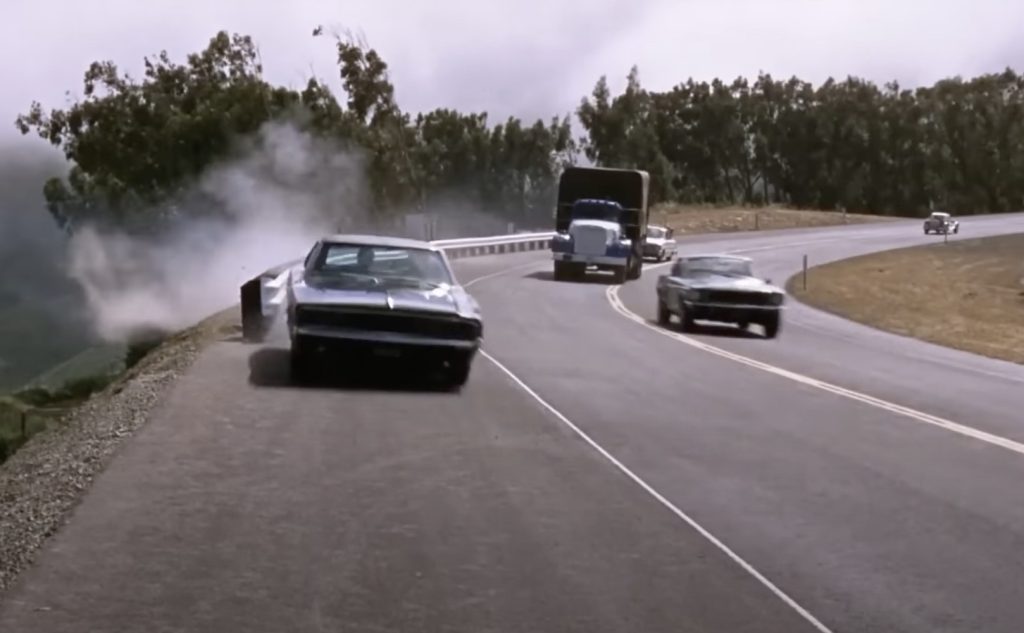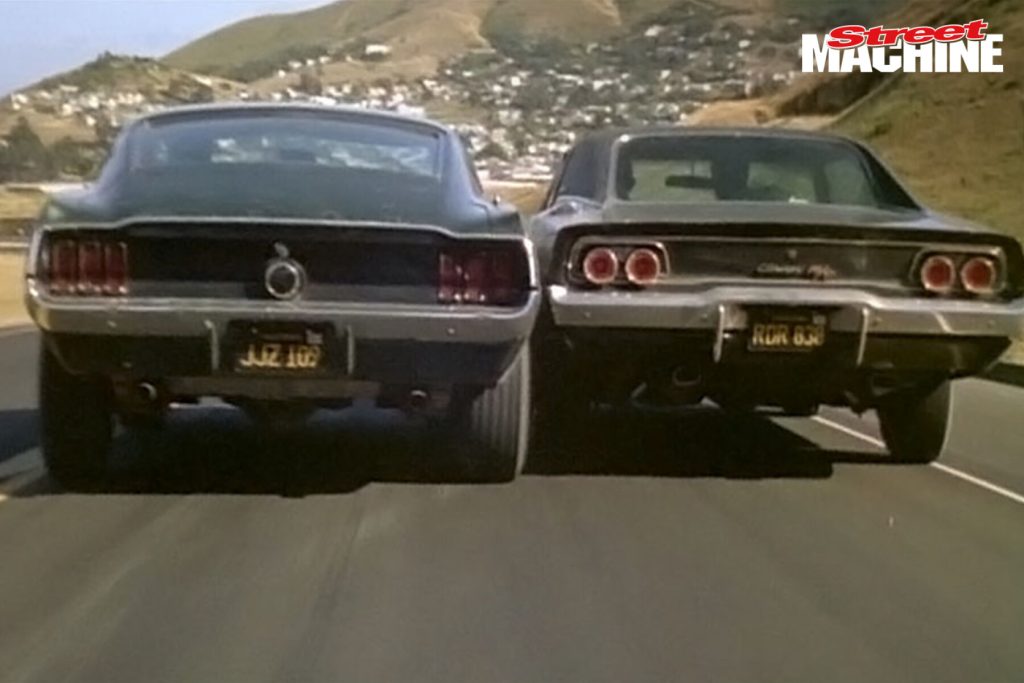The car chase scene in the movie Bullitt (1968) has etched itself into the annals of film history, captivating audiences with its heart-pounding intensity and iconic vehicles. In this article, we delve into the adrenaline-fueled confrontation between the 1968 Ford Mustang GT and the 1968 Dodge Charger R/T, as Steve McQueen’s character, Frank Bullitt, faces off against relentless hitmen.

The Unforgettable Showdown
A Thrilling Encounter on Wheels
In this memorable scene, Bullitt finds himself entangled in a high-speed pursuit, pushing the limits of his 1968 Ford Mustang GT and matching wits with the skilled assassins driving the menacing 1968 Dodge Charger R/T. The screeching tires, roaring engines, and the sheer intensity of the chase make it an unforgettable cinematic experience.
The Ford Mustang GT: An Icon Reborn
As the embodiment of American muscle, the 1968 Ford Mustang GT showcases power, speed, and style. Its sleek design and thunderous V8 engine make it the perfect choice for Bullitt, a no-nonsense detective who demands nothing less than the best. With every turn of the wheel, the Mustang leaves an indelible mark on the silver screen.
The Dodge Charger R/T: A Worthy Adversary
Matching the Ford Mustang’s raw power, the 1968 Dodge Charger R/T emerges as a formidable adversary. Its aggressive appearance and robust performance capture the essence of the anti-hero, amplifying the tension and raising the stakes during the electrifying chase. The Charger’s presence serves as a constant reminder of the impending danger.

The Film’s Riveting Storyline
Frank Bullitt: The Unyielding Detective
Bullitt, portrayed by the legendary Steve McQueen, embodies the archetype of a tough and relentless police detective. Initially assigned to protect mafia informant Johnny Ross, Bullitt’s world is turned upside down when hitmen ambush their secret location, resulting in a fatal wound to Ross. Fuelled by a thirst for justice, Bullitt takes it upon himself to uncover the truth behind the attack and bring the killers to justice.
Senator Walter Chalmers: A Political Obstacle
In Bullitt’s pursuit of the truth, he faces opposition from ambitious senator Walter Chalmers, who aims to shut down the investigation. Chalmers’ interference complicates Bullitt’s mission, leading to a thrilling battle between a detective driven by justice and a politician driven by ulterior motives.
Conclusion
The Bullitt car chase scene, featuring the Ford Mustang GT and the Dodge Charger R/T, remains an unparalleled display of vehicular action and suspense in cinematic history.From the screeching tires to the roaring engines, this pulse-pounding sequence captures the imagination of audiences even to this day. The clash between the iconic Ford Mustang GT and the menacing Dodge Charger R/T symbolizes more than just a battle on wheels—it represents the clash between good and evil, justice and corruption.

In Bullitt (1968), Steve McQueen’s portrayal of Frank Bullitt, the unwavering detective, adds depth to the story. Assigned to protect Johnny Ross, a mafia informant scheduled to testify before a Senate subcommittee, Bullitt finds himself entangled in a web of conspiracy and betrayal. When hitmen strike, Bullitt’s determination to bring the killers to justice intensifies. However, ambitious senator Walter Chalmers, the head of the subcommittee, becomes an obstacle in Bullitt’s path, hindering his progress and forcing him to confront not only the killers but also the source of the leak that put Ross in danger.
Directed by Peter Yates and produced by Philip D’Antoni and Robert E. Relyea, Bullitt captivates audiences with its gritty realism and exceptional performances. The screenplay, written by Alan Trustman, Harry Kleiner, and Robert L. Fish, weaves a tale of suspense and intrigue, expertly building tension until the explosive climax.
In conclusion, Bullitt’s car chase scene, featuring the Ford Mustang GT and the Dodge Charger R/T, has become an indelible part of cinematic history. Steve McQueen’s portrayal of Frank Bullitt, combined with the high-octane action and gripping storyline, creates an unforgettable experience for viewers. The clash between these two legendary American muscle cars serves as a testament to the enduring appeal of this iconic scene.
FAQs (Frequently Asked Questions)
1. Was the car chase scene in Bullitt (1968) real? No, the car chase scene in Bullitt was not entirely real. While some shots involved stunt driving and actual vehicles, the scene was carefully choreographed and filmed with the utmost safety precautions.
2. Who drove the Ford Mustang GT and the Dodge Charger R/T in the car chase scene? Professional stunt drivers performed the daring maneuvers in the car chase scene. Bud Ekins drove the Mustang, while Bill Hickman took the wheel of the Charger.
3. Are the Ford Mustang GT and the Dodge Charger R/T from Bullitt still in existence? The Ford Mustang GT used in Bullitt was rediscovered in 2018 and is now on display at the National Mall in Washington, D.C. The whereabouts of the Dodge Charger R/T used in the film are currently unknown.
4. How long did it take to film the car chase scene in Bullitt? The car chase scene in Bullitt took approximately three weeks to film. It involved meticulous planning, coordination, and multiple takes to capture the desired intensity and excitement.
5. Did Bullitt (1968) receive any awards or nominations? Yes, Bullitt received critical acclaim and was nominated for an Academy Award for Best Film Editing. The movie’s realistic car chase scene, in particular, garnered widespread praise and recognition.